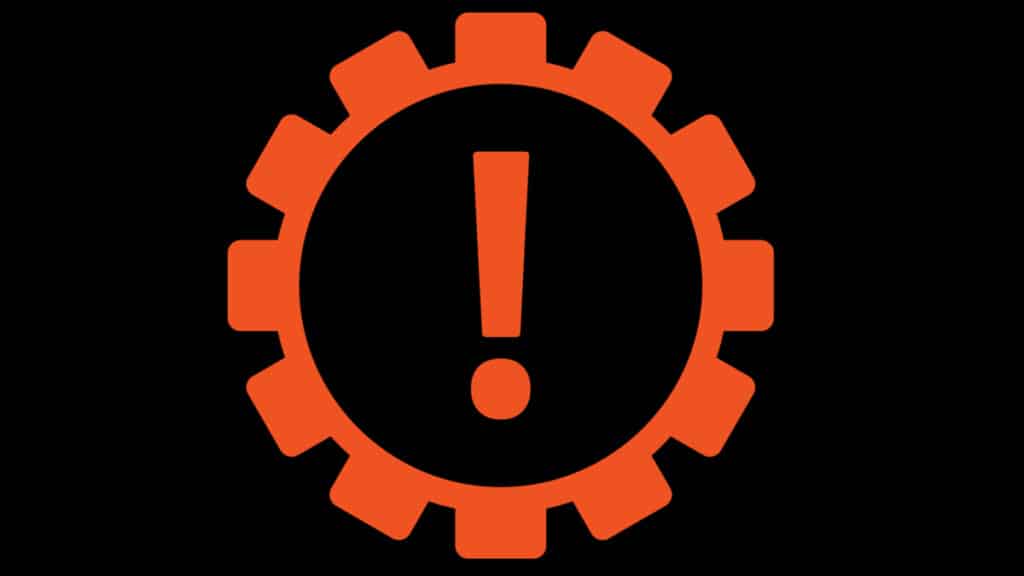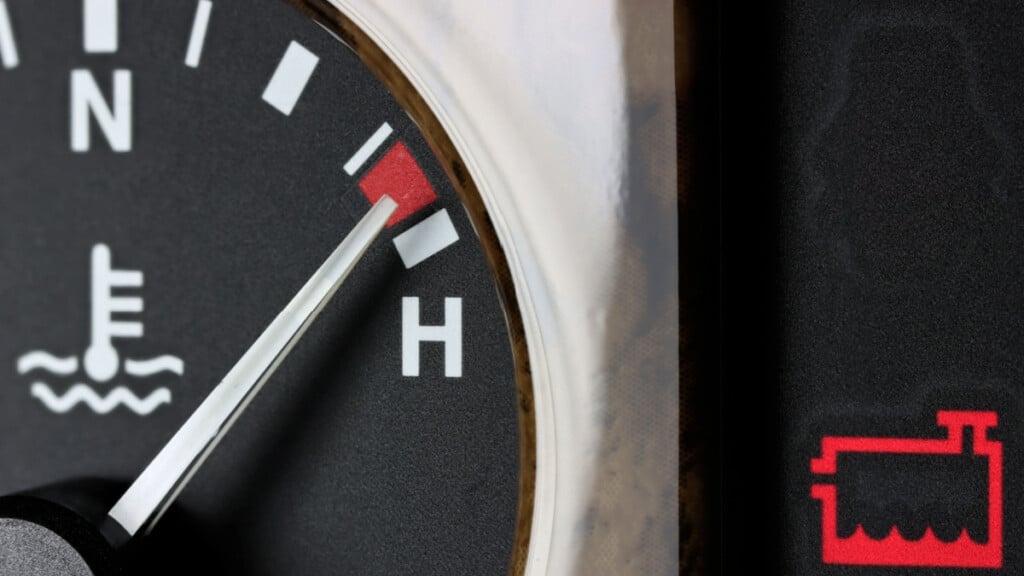Understanding Normal Transmission Temperature: Key Facts and Guidelines
Want to know what your car’s Normal Transmission Temperature is? Our post goes over the perfect ranges and gives you some tips to keep your transmission running.
Transmission oil is necessary to keep the transmission cool and make sure it works right. Computers keep an eye on the temperature of the fluid to make sure there are no mechanical problems. So, what temperature is normal for the transmission, and when should you start to worry?
In this piece, we answer the top questions you have about Normal Transmission Temperature. We talk about the usual temperatures and the signs you should look out for. We also tell you how to keep the engine from getting too hot. At the end of our piece, we talk about what you can do to stop it from happening, which is the most important thing.
What Is Normal Transmission Temperature ?

Most automatic gears made in the last few decades are made to work at temperatures between 175 and 225 degrees Fahrenheit. If it gets any hotter than this, there’s a problem with the machine that needs to be fixed. With the right precautions, the transmission won’t get too hot.
When the oil is in the torque converter, that’s where it gets the hottest. Temperatures can reach more than 350 degrees Fahrenheit, especially when the machine is working hard.
Most cars don’t have a special alarm that goes off when the transmission fluid temperature gets too high. Most cars don’t have temperature readings for the transmission. Instead, the Check Engine Light will turn on or, if your car has one, a gearbox warning will sound.
Must Read: The Guide About Transmission Speed Sensor Location and Replacement
What is a Normal Transmission Temperature when towing?
When you pull something behind your car, the engine will have to work harder. The weight and drag of the car being towed make your engine work harder. The temperature of the transmission oil will go up because of this.
Still, it shouldn’t be too far out of the ordinary. Even though it might reach 225 degrees Fahrenheit, it shouldn’t often go higher than that. If it does, you are making the transmission wear out faster than it needs to.
How Do I Check My Normal Transmission Temperature?
You will need a Normal Transmission Temperature gauge or an infrared temperature gun to check the temperature of your car’s transmission. You can buy one at most places that sell car parts. Follow these steps to use the gauge:
- Park your car on a flat surface and turn the engine off.
- Take the dipstick out of the reservoir for the transmission oil and clean it with a rag.
- Push the Normal Transmission Temperature gauge all the way into the tank.
- Start the engine and let it run for two to three minutes.
- Look at the gauge to see how hot the transmission is and write it down.
- Take the gauge out of the tank and put the dipstick back in its place.
If you have an infrared temperature gun, point it at the side of the transmission and pull the trigger. The temperature of the transfer will be shown on the gun.
How can I tell if the transmission in my car is getting too hot?
If there isn’t a temperature gauge on the panel, you’ll have to pay attention to the signs that the transmission is getting too hot. Here are some things to look out for.
1. Light for Transmission Warning

If your car has a transmission warning light, this sign on the dashboard will let you know what’s going on. It is made to go off if there is a problem with the engine. If your car doesn’t have this, the Check Engine Light may come on instead.
Remember that the gearbox light doesn’t just come on because the car is too hot. It can also let you know when there is low fluid, a broken shift interlock, a broken torque converter, a broken valve body, or a problem with the electrics. For the problem to be fixed, a full evaluation is needed.
2. The smell of fire
There are many things that can go wrong with your car and cause it to smell like it’s on fire. It could mean that something is wrong with the electrics or that the motor is too hot.
No matter what, it’s important not to ignore this sign. The worst thing that could happen is that whatever is burning could start a fire, which would be very bad.
3. It’s Hard to Change Gears
When the gearbox fluid gets too hot, it stops working as well as it was meant to. Since the fluid has to stay a certain way, you might notice problems when the engine changes gears.
It could feel like it’s stuck in one gear or the clutches could start to slip. No matter what is wrong, you should stop driving to figure out what is wrong.
4. Vibration/grinding
Like motor oil, transmission fluid helps keep things moving smoothly. When it’s the right thickness, it will grease the gears and make sure everything goes smoothly. But when the fluid gets too hot, it can’t move as well as it should.
You are left with noisy wheels that grind against each other. You might also feel more vibration, especially when the gear shifts. The problem with both of these is that damage may have already started. Because of this, it’s important to pay attention to early signs and stop driving as soon as possible.
5. Engine Getting Too Hot

When the Normal Transmission Temperature is working too hard, you can bet that the engine is too. Because of this, you might notice that the engine starts to get too hot.
When the temperature of the engine gets too high, it can do a lot of damage. Stop moving before the engine head cracks or the head gasket blows. The last thing you want is for your engine or transmission to break down. Depending on how much your car is worth, it may end up in a junkyard if any of these things happen.
Why does the transmission temperature get so high?
There are a few things that can make the engine too hot. Here are a few reasons why that might be.
- Transmission oil that was old and dirty
- Low amounts of transmission fluid
- Transmission cooler lines that leak
- Seals or gaskets that are worn
- Transmission screen clogged up
- Engine getting too hot
- Using the transmission more than it can handle
As soon as you notice that the engine is getting too hot, you should take action. If you ignore the problem, it will only get worse and cause major technical problems.
How do I get the transmission to cool down?
Once you realize that the transmission is getting too hot, you should pull over in a safe place. Don’t drive any further.
In some situations, you may be able to cool down the Normal Transmission Temperature by putting the car in Neutral and revving the engine. If not, you should turn off the car and let it cool down.
If you are pulling too much or going in very hot weather, you should find a way to lighten the load on the car. You don’t want to keep putting too much force on the car.
You might want to put a transmission cooler on to stop this from happening again. This unique tool helps keep the transmission cooler when moving.
In the worst case, you might have to call a tow truck to get your car to a nearby gas station. If the engine is too hot, you shouldn’t keep driving it because it could break down. If you’ve ever looked at how much a new transmission costs, you know how important it is to keep this important part in good shape.
How to Keep a Transmission from Getting Too Hot
Since you know what makes the transmission warm, it shouldn’t be too hard to figure out how to stop it from happening. Here are some ways to make sure the transmission stays safe.
- Check the amount of the fluid often and add more as needed.
- Follow the plan for transmission maintenance that was given to you.
- Some gears should only be taken care of by a trained mechanic.
- Watch for leaks and fix them right away if you find any.
- If you push your car to its limits, add an aftermarket transmission fan.
- When it’s time, you should change the transmission filter.
- Don’t pull heavy things too often.
- Don’t drive in stop-and-go traffic when it’s very hot outside.
- If your car is having trouble, you should take it to an experienced mechanic.
If you take good care of your transmission, it will last for a long time.
FAQs
Does letting the car sit still warm up the transmission?
Yes, it does, but you don’t need to drive before warming up the gear. The cars of today are made to start up and get going. Leaving the engine running at idle can cause more damage, so you shouldn’t do it unless you have to.
How can I keep the engine of my car cool?
It’s important to do maintenance as often as the maker tells you to. Every so often, the transmission oil and filter should be changed. If you notice anything strange about the clutch, you should also have a mechanic check it out. If you don’t fix a problem, even a small one, it can grow into something big.
What does “low transmission temperature” mean?
When it’s very cold outside, the temperature of the transmission fluid can drop below average. Not only does the fluid get thinner, but its viscosity also changes. This means that the transmission is no longer safe. During the winter, you may have trouble changing gears or notice that your car isn’t as fast.
Can you drive if the engine is too hot?
No, if the engine starts to get too hot, you should stop driving. If you keep driving with an overheated engine, it could break down for good. Stop instead, let the transmission cool down, and then try again. If it keeps getting too hot, have a tech check it out.
How hot does transmission oil start to burn?
Under normal conditions, your car shouldn’t burn any transmission oil. Also, transmission fluid does not catch on fire. But it can catch fire if it gets too hot, which is above its spark. Most flashpoints for transmission oil are between 302°F and 383°F (150–195°C).
In the end,
Everything that happens in a car happens in a normal way, and the engine Normal Transmission Temperature is no different. Knowing that the temperature of the transmission oil should stay between 175 and 225 degrees Fahrenheit helps you figure out if there’s a problem before it causes damage.
If you look for signs that the gearbox is overheating and think it might be, you should have a professional check the car. If it hasn’t been taken care of properly, it may only need an oil and filter change. If you don’t, you might cause damage that needs to be fixed before you can drive again.

